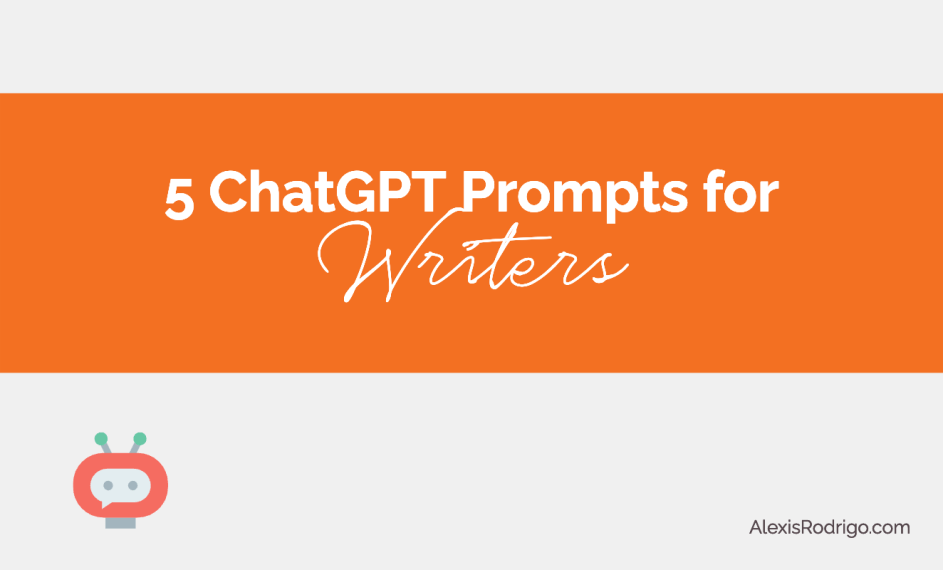Have you ever stared at a blank screen with no idea what to write or how to write it?
If so then look no farther than ChatGPT.
Don’t worry, news of the AI-powered chatbot replacing writers is grossly exaggerated.
I prefer to think of ChatGPT as a tool for writers.
It can streamline a lot of the things you have to do to write well. But it cannot do everything and produce a great finished piece (at least, not yet!).
Here are:
5 ways you can use ChatGPT to become a better and faster writer
1. Find topics
With ChatGPT, you never have to stare at a blank screen. Instead, take advantage of the fact that the chatbot has been ‘trained’ by thousands, probably millions, of web pages up to September 2021. It has the breadth of knowledge of your target audience or readers that would take you many hours to match. And so it’s a terrific tool for generating topic ideas and suggestions.
Suggested prompt:
"Can you suggest some blog post topics related to [specific niche] that are engaging and informative? I'm looking for ideas that can resonate with my target audience, which is [describe your target audience briefly]."
Example:
"Can you suggest some blog post topics related to online marketing for small businesses? I'm particularly interested in content ideas for beginners and topics that can help businesses improve their social media presence."
2. Brainstorm headlines, titles, and subject lines
Once you’ve selected a topic, you can have ChatGPT come up with possible titles, headlines, or subject lines, depending on what you’re writing. Make sure to let it know how long you want them to be and who you’re writing for.
Suggested prompt:
“Can you come up with 10 alternate email subject lines to [original subject line]? Limit them to [ideal length] at the most, and write them for [target audience].”
Example:
“Can you come up with 10 alternate blog post titles to ‘5 ways ChatGPT can make you a better writer’? Limit them to 41 characters, and write them for professional writers.”

3. Create an outline
Pick your favorite title or headline. Then use ChatGPT to generate an outline for the piece. Again, the more direction you can provide, the better the outputs.
Suggested prompt:
"Can you help me create an outline for a 1,000-word blog post on [topic]? I want to [cover key] points, provide valuable information, and engage my readers effectively."
Example:
"Can you help me create an outline for a 1,000-word blog post on ‘5 ways ChatGPT can make you a better writer’? I want to cover topic research, outlining, drafting, and revising. I also want to provide valuable information, and engage my readers effectively."
3. Write a first draft
Tweak and adjust the outline as you see fit. You can then use it when you prompt ChatGPT to draft the piece.
Suggested prompt:
"Can you please help me draft a blog post based on the outline below? The title is '[title]' and the outline covers key points about '[briefly mention the main points from the outline].' I want the content to be engaging, informative, and around [desired word count] words."
Example:
"Can you please help me draft a blog post based on the outline below? The title is '5 ways ChatGPT can make you a better writer' and the outline covers key points about 'topic research, outlining, drafting, revising, and repurposing.' I want the content to be engaging, informative, and around 1,000 words." [copy and paste the outline under the prompt]
Now go over the draft and put your own style and personality on it. Add stories and anecdotes from personal experience. Make it your own.
4. Rewrite for tone and style
Another great way to use ChatGPT is to revise or rewrite drafts to a different tone or style. Sometimes, for example, I’m stuck with a sentence that just doesn’t flow well, and I’m stumped as to how to rewrite it. Or, I have a draft that sounds too corporate and formal. I can then ask ChatGPT to revise the draft to suit a different tone.
Suggested prompt:
"Can you please rewrite this draft with a [describe the desired tone, e.g., 'formal,' 'casual,' 'professional,' 'humorous,' etc.] tone and tailor it for a [describe the target audience, e.g., 'young adults,' 'senior professionals,' 'tech-savvy readers,' 'academic audience,' etc.]." [copy and paste the piece under the prompt]
Example:
"Can you please rewrite this draft with a conversational tone and tailor it for an audience of Baby Boomers?”
5. Summarize or spin
Yet another task that ChatGPT excels in is taking a finished piece and spinning it or repurposing it into other formats. This comes in handy after you’ve written that blog post, for example, and want to turn it into social media posts to promote the blog.
Suggested prompt:
"Can you help me repurpose this written piece (e.g., press release, article, blog post) into [mention the desired format, e.g., 'social media posts,' 'infographics,' 'short video scripts,' 'newsletter content,' etc.]. I want to maintain the key information while adapting it for a different platform or audience." [copy and paste the blog post under the prompt]
Example:
"Can you help me repurpose this blog post into 10 Facebook posts? I want to maintain the key information while adapting it for an audience of Facebook users."
By now, you probably have lots of ideas for using ChatGPT to improve your writing workflow and outputs.
But beware, ChatGPT has its limitations.
Here are...
5 things you should not ask ChatGPT to do because it sucks at them
1. Collect statistics
ChatGPT tends to make stuff up. That’s why it has a disclaimer at the bottom of the page, loud and clear:

So don’t ask it to research statistics and data for you. And if it does spew out statistics, make sure to double and triple check them before using.
2. Gather quotes
ChatGPT also doesn’t do a good job of finding quotable quotes. In fact, it just might invent them for you. Do this research yourself, or ask a human assistant to do it for you. And even then, make sure you get to the original source of the quote.
3. Provide personal opinions and experiences
ChatGPT doesn’t have experiences or opinions. And so, it cannot provide personal reviews, advice, or other subjective matters. Hooray! That means you get to do this.
4. Edit and proofread
ChatGPT wasn’t built for editing and proofreading, so don’t expect it to perform this task well. In fact, even software that’s created for this purpose is not foolproof. It still takes human proofreading to detect mistakes from context and to polish writing.
5. Empathize and express emotions
It goes without saying, but I’m going to say it anyway: ChatGPT doesn’t have emotions. It may fake emotions or come across as being friendly, etc., but it cannot actually feel anything. So it’s still your job to write in an emotive way that resonates with your reader.
What do you think of ChatGPT?
Have you been using it? How?
If not, will you try it now?


